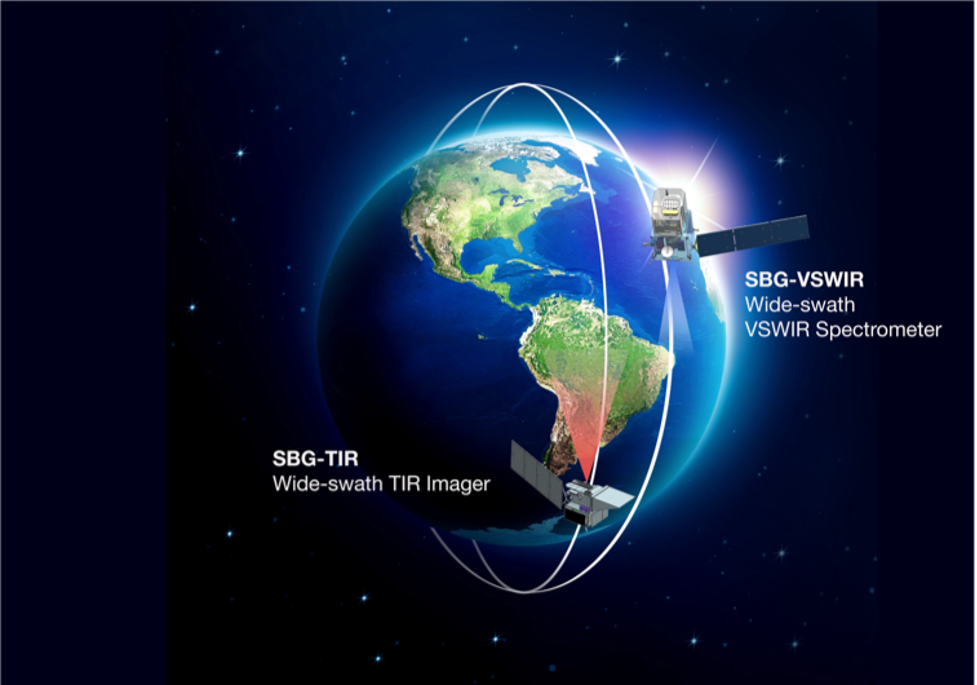Projects
Surface Biology and Geology (SBG)

A depiction of the two spacecraft that make up SBG: SBG-TIR and SBG-VSWIR. SBG VSWIR will collect only during the day over both ocean and land. SBG-TIR will collect during the day and at night over both ocean and land; it is comprised of two different instruments (OTTER and VNIR).
Background
The National Academies of Science, Engineering and Medicine 2017 Decadal Survey of Earth Science and Applications recommended Surface Biology and Geology (SBG) as a Designated Observable.
The SBG mission(s) will use hyperspectral visible to shortwave infrared (VSWIR) and thermal infrared (TIR) imagery to investigate ground/water temperature, snow reflectivity, active geologic processes, vegetation traits, and algal biomass.
Two Earth-observing spacecraft concepts are currently in development at JPL: SBG-TIR (in collaboration with ASI) and SBG-VSWIR.
Problem
SBG is currently in the process of developing mission requirements, in particular determining spacecraft capabilities and science objectives. This process goes in both directions: Given spacecraft capabilities, what results are achievable? Given desired results, what capabilities are required?
We wish to model the impact of changing parameters (e.g. data rates, available ground stations, cloud screening approaches) on mission results (e.g. area coverage, downlinked data volume, ground station usage) to better inform mission planning decisions.
Technology
CLASP serves as the core tool for mission analysis. Developed by the AIG and used in several flight missions, it ingests spacecraft trajectories, science campaigns with their observational constraints, and spacecraft models (including instrument modes, power model, and memory constraints), and outputs observation schedules for a given planning horizon.
Additional software has been developed to support SBG-specific needs and to simplify the workflow.
Impact
Without an automated scheduling system, it would be difficult to determine the effects of changing parameters on observation outcomes. CLASP enables mission planners to easily try different candidate configurations and see their effects.
Status
As of January 2023, CLASP is actively being used for SBG-TIR and SBG-VSWIR pre-Phase A development.Publications
Team
Mission Planning Team:- Antonella Albuja (Lead)
- Tyler Dawson
- John Gilbert
AIG CLASP Team:
- Elly Shao
- Caleb Wagner
